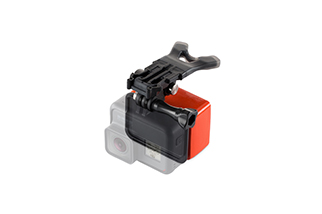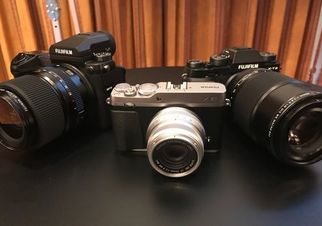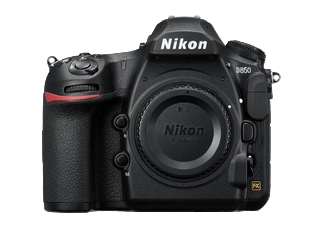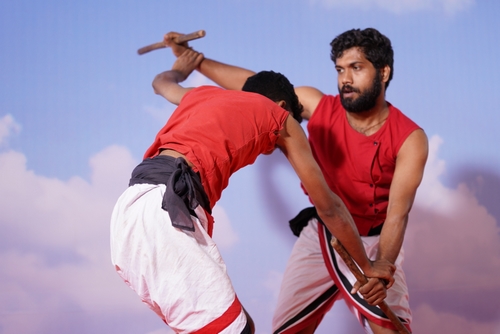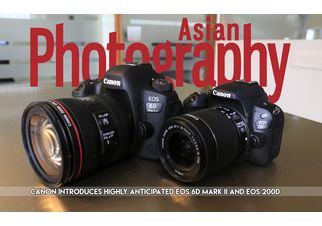In many ways 1st July 2017
will etch its way in India’s history as a monumental change and
reform in India’s taxation regime. Many call it ‘THE’ biggest
move after India’s independence while others haven’t welcomed it
with open arms. Whatever you may call it, an opportunity or a
challenge, it is clear that the introduction of the Goods and
Services Tax (GST) by the Government is one of the biggest moves in
India’s existence. In this article Bhavya Desai decodes GST,
its opportunities, impact and the implications on the imaging
industry.
So if you have been listening to this
word GST, which seems to be dominating the business circles in every
conversation and have been wondering, how is this going to affect
you? Then this article will give you a quick 101 on the same.
What is GST?
GST stands for Goods and Services Tax
(GST) which is a comprehensive indirect tax levied on manufactures,
sales and consumption of goods as well as services at a National
level. Ideally it replaces all indirect taxes levied on goods and
services by the Indian Central and State governments.
Basically it is a unified tax structure
across India which eliminates differential duty structure and
taxation system across different states in India.
How does this matter and affect the
consumer?
So if you are wondering, how does this
matter to me? Then you need to think again because the introduction
of GST will have massive positive impact on the pricing structure of
products, introducing a unified pricing policy to product categories
across India.
For example, a camera purchased in
Maharashtra earlier would be priced lesser or more (depending on the
state) elsewhere. So if a camera was before VAT was costing Rs. 100
(excluding tax) in Maharashtra, then it’s eventual MRP would be Rs.
113.50 to a consumer. The same camera in Tamil Nadu would cost the
consumer Rs. 114.50 since it levied a VAT of 14.5%.
Another simple example is of the
automotive industry. Have you ever wondered that a car of same make
and year bought by your friend/family in a different state was far
cheaper than what you paid for? In simple words this was due to the
introduction of number of layered taxes levied by the Govt on the
showroom price of the car. Hence a luxury car in Delhi would cost at
least 7-8% cheaper than in Mumbai since there were number of
additional taxes that were levied on products entering Mumbai in the
past.
So the biggest change that one will see
with the implementation of the GST as a consumer is the unified
taxation system on products across India. Which means now if you buy
a camera, car, or any other product across the country, it will have
the same prices across the states. So depending on the state you are,
the % increase or decrease in prices will depend on what the % of
taxes were earlier.

But one good news as a consumer
that you might find is that there isn’t been much of a change in
the pricing of the products in the imaging industry despite GST being
implemented. As Nikon India’s MD, Kazuo Ninomiya clarifies, “We
welcome the new structure of the GST regime as it has brought the new
era in the indirect taxation landscape of modern India, paving the
way for a simplified tax structure for goods and services. With GST
already in place, we are helping in smooth transition for retailers
and distributors, who we have such long-standing relationships with.
As of now, we are analysing the effect of current tax structure;
though we have not made any price changes in our product range
despite the tax changes.”
How are the GST categories
classified?
Incase you are wondering how do the
thousands of products across different categories in the Imaging and
other industries get classified under GST? Well, it’s simpler than
you think. The Govt. has broadly classified GST under four categories
in terms of taxation levied:
GST Taxation
brackets:
Each product category and products are
defined under a Chapter of an HSN Code. Most products in the imaging
industry are classified under the taxation bracket of 18% or 28%
currently.
Cameras are classified under chapter 90
of the HSN code. Chapter 90 of the HSN code contains goods like
optical, photographic, cinematographic, measuring, checking,
precision, medical or surgical instruments and apparatus. Under
chapter 90, cameras are classified under HSN Code 9006 which attract
28% GST. HSN code 9006 pertains too photographic (other than
cinematographic) cameras; photographic flashlight apparatus and
flashbulbs other than discharge lamps.
Further, cinematographic cameras and
projectors, whether or not incorporating sound recording or
reproducing apparatus are also classified under chapter 90 of the HSN
code attracting 28% GST rate. Hence, digital cameras and analogue
cameras attract a GST rate of 28% in India.
Camera lenses are also classified under
chapter 90 of the HSN code as lenses, prisms, mirrors and other
optical elements, of any material, mounted, being parts of or
fittings for instruments or apparatus, other than such elements of
glass not optically worked. Camera lenses conforming to the above
classification are taxed at 18% GST.
Professional photographic lights and
accessories are also classified under 28% GST bracket, which when
compared to the sum of previous indirect taxes is not that much of a
change from the previous taxes.
Combined with the benefits that the
Govt. has provided along with the minimal changes in the taxes are
critical reasons why the manufacturers haven’t increased the prices
of their products currently.
What are the benefits of GST for the
industry?
With an unprecedented move like
this, there has to be a major benefit, both to the consumers as well
as the sellers right? So as ambiguous as this may sound, if my
understanding is correct then benefit in this case is more to the
sellers and the govt, and I say this with all positivity by way of
being make able to make products more available to the consumer,
easily and swiftly.
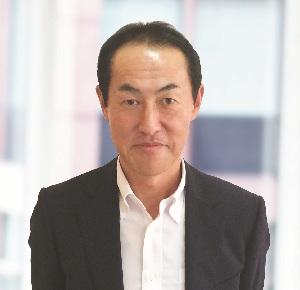
As Epson India’s President and CEO,
Kasai Toshiyuki said that GST definitely brings in uniformity across
various players, big or small. “We at Epson believe that GST gives
a fair chance for both small established players. It’s a platform
to compete & leverage the various emerging opportunities that
could be triggered from the implementation hence enhance business
opportunities. It’s a big welcome move as it sets a long term
growth driver. At Epson, we are hopeful that the new system will
boost investments and benefit the economy.”
As a consumer the most critical point
from a point of purchase is the price-point. But as an industry it is
important for the manufactures to be transparent in order to conduct
their business.
Sony says that as a company they
believe in transparency and in the long run, the new tax regime will
benefit customers as it encourages transparency. “Like in every
other sector, GST will significantly improve the efficiency of
business operations as it will create a much simpler indirect tax
regime and reduce our compliance costs in the long term. Our
logistics and inventory costs will also be positively impacted. The
creation of a unified Indian market will also help us deliver better
products and services to our customers. In the long term, it will
help the government to collect taxes in a more efficient manner and
increase their revenues significantly,” said Hiroyuki Tokuno,
DGM Digital Imaging, Sony India.

Anuj Aggarwal, Vice President &
CFO, Canon India said, “GST is definitely a paradigm-shifting tax
regime and a welcome move from the government. Its implementation has
initiated a new beginning in the indirect taxation landscape of
modern India, paving the way for a simplified and homogenous tax
structure for goods and services across all industries and verticals.
I believe that introduction of GST is a positive step and would be
beneficial for the industry in the long term. There were initial
apprehensions and uncertainties which might have short-term impact.
However, we must remember that replacing a complicated system of
indirect taxation will make it easier for firms to do business across
the country. This will boost investment and, through that, the
economy is also set to benefit.”

As Tamron’s India President and CEO,
Nitin Goyal puts it, “The Goods & Service Tax or GST is one of
the biggest fiscal reforms in India since Independence. All
businesses, small or large, will be impacted by this new indirect tax
regime. GST will be levied on both goods and services and will
subsume and replace the current indirect taxes such as excise, VAT,
and service tax.”
So what exactly are the benefits to the
Indian economy? I’ve listed some information below that makes
things pretty clear.
-
Removing cascading tax
effect: Under the current regime, the service tax paid on
input services cannot be set off against output VAT. Under GST, the
input tax credit can be availed smoothly across the spectrum of
goods and services, thus reducing the tax burden on the end user and
removing cascading effect.
-
Defined treatment for
e-commerce: Many Indian businesses provide goods and
services through the internet. Earlier, there were no specific
provisions for treatment of the e-commerce sector. Currently, states
have variable VAT laws for this sector. For example, online websites
(like Flipkart and Amazon) delivering to Uttar Pradesh have to file
a VAT declaration and the registration number of the delivery truck.
Tax authorities can sometimes seize goods when there is a failure to
produce documents.
Again, these e-com brands are treated
as facilitators or mediators by states like Kerala, Rajasthan, and
West Bengal which do not require them to register for VAT.
All these differential treatments and
confusing compliances will be removed under GST. For the first time,
GST clearly maps out the provisions applicable to the e-commerce
sector and since these will apply all over India, there should be no
complication regarding inter-state movement of goods any more.
-
Increased efficiency in
logistics: The logistics industry in India had to maintain
multiple warehouses across states to avoid the current CST and state
entry taxes on inter-state movement. Most of the times, these
warehouses were forced to operate below their capacity thus
increasing their operating costs.
As GST goes live, these restrictions on
inter-state movement of goods will lessen and the logistics sector
might start consolidating warehouses across the country
What are the practical challenges
that the industry is facing?
Naturally when you are implementing and
executing an historic reform in the largest democratic economy in the
world, one can’t expect things to be spot on.

“The task of
implementing such a gargantuan tax reform in one of the fastest
growing economies is expected to be a tough challenge. In my view the
government has done a fairly decent job in the implementation
process. The only thing that they probably could have done better is
the preparedness and training of the government official to deal with
the queries at a local level,” says Pulin Soni, VP, Photoquip
India.
Epson India’s President and CEO, Kasai
Toshiyuki adds, “There are always challenges when a new process or
system is rolled out. The same applies for GST. During the initial
stages, there was a lack of information which created a lot of
ambiguity and confusion in the market. Different taxes on different
products also added to the confusion. If you look at it, the new GST
tariff is higher than the previous VAT based rate (CVD+VAT) on MFP
and consumables. Hence, our existing procured products material also
required a MRP change post the roll out of GST.”
One of the biggest challenge that most
businesses (especially distributors/retailers) in the industry were
facing were the advances paid towards the stock procured before the
30th June 2017 which already had a paid up VAT tax. But the
government put policies in place to help the businesses in such
cases, offering 60% on the difference of paid up VAT to
GST, albeit you register the stock statement with the GST
Department before the 1st July 2017. This brought a much needed
respite to the businesses since the increased rate of 28% in most
cases was eating into the margins of the manufacturers and others.
“In case of DSLR lenses since there
was no loss on existing inventory which got transferred from VAT
regime to GST regime there was not much issue. We appreciate step
taken for compensation of CGST increased from 40% to 60% by govt.
authorities on the previous stocks,” added Goyal.
And as for manufacturers, “We have
not faced much challenge with the products that have been procured
already since importers like us are allowed to take the input tax
credit of the Countervailing duties (CVDs) on the closing stock in
hand below 1 year of age,” added Kazuo Ninomiya, MD, Nikon India.
Companies like Canon prepared well in
advance to adopt GST from the beginning by ensuring clear
communication. Through workshops and Electric Direct Mails, they
created increased awareness of the new tax. “Once the tax rates
were announced, comprehensive trainings and awareness sessions were
conducted for employees and partners alike. Communication is key to
effectively manage change, and we left no stone unturned to ensure a
fair and transparent transition. As an organisation, we are agile to
adapt to any situation and be flexible to changes.”
However while these processes might
have been put in place by the government and the companies, it’s
implementation and execution is an entirely different story. The
company did add that the road to implementation of GST hasn’t been
devoid of challenges. “There are challenges on claiming credit of
taxes on the products already procured especially imported products.
Further due to non-availability of full credit to dealers on their
inventory added to complications,” said Aggarwal.
No-information, rumours and more
While most manufacturers ideally more
or less prepared ahead of time for the change, it wasn’t all
hunky-dory with the constant changes in the policies until the
11th hour. However, there is a consensus amongst most
manufactures and the industry that the policies have become pretty
clear after the 1st of July. But whatever said and done the months of
June and July 2017 have lead for the industry to loose business.
And like any other Indian movie, much
of it was due to the confusion, speculation and misinformation to/in
the trade. Although things were clear from the Govt. and the GST
council, due to lot of interpretations from different people at
different levels at the execution level, there were confusions. There
could’ve been possible ways of providing much easier documentation
that a regular trader/normal person can understand which help its
rollout easier.
Naturally the bigger traders and listed
companies have been following the GST Council for the larger part of
their interest. Although some of our sources have mentioned that
traders in the Tier II and III cities in some cases aren’t even
aware of its implementation in the imaging industry. Although they
couldn’t come on record to comment on this story, but they were still
continuing to bill under the earlier VAT even post July.
However, things seem to be settling
down now with positive sentiments amongst the industry. The industry
experts believe that post 15th August the markets should start
working like before and by the time seasonal sale starts, things will
be in full swing.
“The acceptance of the new policy and
reform is open to the interpretation and perspective of the trader.
If they are willing to accept this change then like other things it
becomes easier to manage and one can find a way. However if you
aren’t willing to change then you might find the new reforms as one
challenge after the other,” says Nikhil Mehta, Proprietor, Mehta
and Sons.
Undoubtedly GST is aimed at increasing
the taxpayer base by bringing SMEs and the unorganised sector under
its purview. For the Camera and Imaging industry considering above
benefits in terms of CST, Entry taxes and others will make the Indian
market more competitive than before and create a level playing field
between large and small enterprises. It will also give Indian
businesses an opportunity to better compete with foreign countries
such as China, Philippines, and Bangladesh.
However, all will not be smooth sailing
since a policy change of such a huge nature is sure to be faced with
teething troubles.

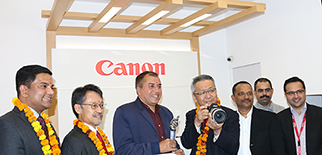




.jpg)
.jpg)




